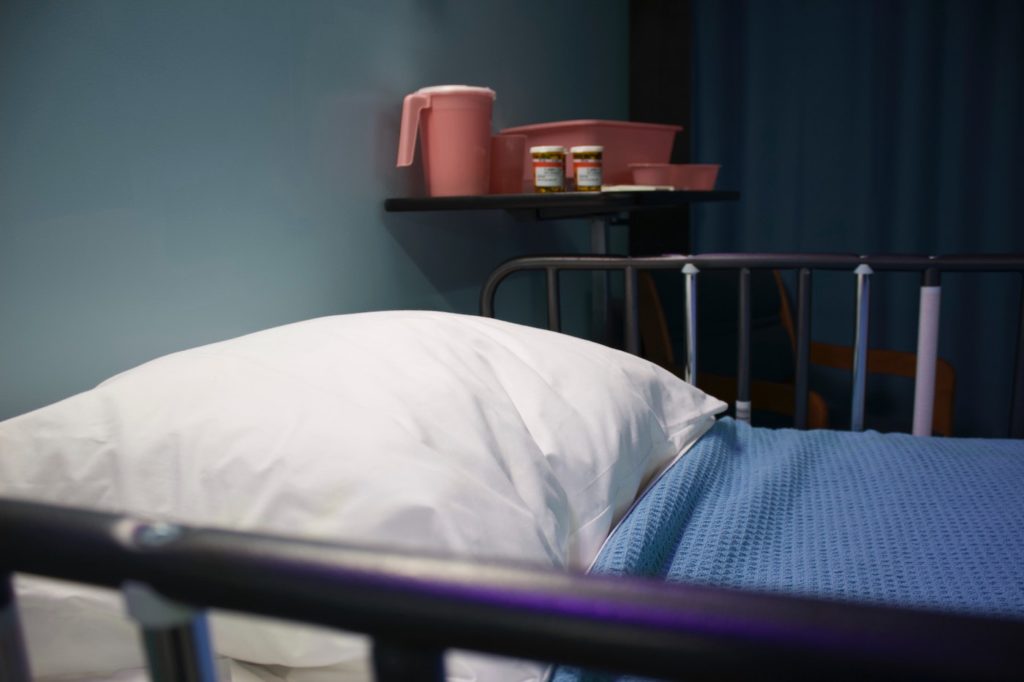Amid the suffering and great disruption of our lives, there is at least one silver lining to COVID-19. Our response to the pandemic—a fierce campaign to prevent death—has revealed to us anew the intrinsic worth of every human life. From the outset, our almost involuntary instinct has been to spare no expense or precaution to save lives. Defensible arguments have been made about the wisdom of certain approaches in certain places to managing the pandemic, but we should all be able to agree that the core motivation behind the approaches has been to preserve life.
Amid the suffering and great disruption of our lives, there is at least one silver lining to COVID-19. Our response to the pandemic—a fierce campaign to prevent death—has revealed to us anew the intrinsic worth of every human life.
Evidence of this motivation is clearest in the work of healthcare professionals. They have gone above and beyond, day in and day out. Besides working tirelessly to heal persons afflicted by a virus with no vaccine, they have comforted patients in their suffering and at the moment of death in lieu of family and loved ones who are not allowed to be present. These doctors, nurses, and others in the trenches deserve our deepest gratitude.
The worldwide display of the basic human impulse to preserve life is a breath of fresh air, considering the steady erosion of the bedrock principle that human life never loses its intrinsic dignity. The growth in acceptance of euthanasia as ethical and even laudable stands at the forefront of this erosion. With the tremendous stress that COVID-19 has placed upon healthcare systems—many of which are crowded in the best of times—it has been heartening to witness no public calls for euthanasia as an option for dealing with the pandemic. That said, it is troubling to learn of a surge of interest in euthanasia during this time.
Start your day with Public Discourse
Sign up and get our daily essays sent straight to your inbox.COVID-19 has reminded us, in dramatic fashion, that the true purpose of healthcare is to preserve life and ease suffering. Advocates of euthanasia aim to “put the white coat” on the procedure, to borrow imagery used by Margaret Somerville, such that what was once called killing is now euphemistically termed 'medical assistance in dying.'
COVID-19 has reminded us, in dramatic fashion, that the true purpose of healthcare is to preserve life and ease suffering. Advocates of euthanasia aim to “put the white coat” on the procedure, to borrow imagery used by Margaret Somerville, such that, what was once called killing is now euphemistically termed “medical assistance in dying.” Many individuals—along with courts and legislatures—have been led to believe that euthanasia cannot be killing, since doctors don’t kill. Euthanasia would be far less palatable if it were performed in a government office by bureaucrats, rather than in a hospital by the same people who deliver babies and cure disease.
It seems particularly disturbing to imagine legalizing euthanasia in this moment, let alone expanding access to euthanasia if it is already legal. Even so, this is precisely what is underway in Canada. Euthanasia became legal across Canada in the wake of Carter v. Canada, the ruling of the country’s Supreme Court in 2015, which determined that the constitutional right to “life, liberty, and security of the person” entitles some persons to euthanasia. More specifically, Carter granted the entitlement to assisted suicide to competent and consenting adults who have a “grievous and irremediable medical condition” that causes enduring and intolerable suffering.
In response to Carter, Canada enacted a euthanasia law in 2016. A key aspect of the law requires that death be “reasonably foreseeable” before a patient can be euthanized. Persons whose death is not near, but who might be suffering terribly, are thus ineligible for euthanasia. Before the ink had even dried on the legislation, individuals and organizations announced that they would challenge the law as unconstitutional. The claimants argued that Carter contemplated that the constitutional entitlement to euthanasia would not depend on the proximity of death but on the severity of suffering.
In September 2019, only three years after euthanasia arrived across Canada, one of the constitutional challenges—a proceeding initiated in Quebec—yielded a court decision. The judge concluded that the foreseeability of death requirement is unconstitutional. In her view, the requirement discriminates against disabled persons far from death (as compared to those near it) and violates the right to life, liberty, and security of the person.
Later that month, another legal challenge to the foreseeability of death requirement evaporated after an expert report filed by the Canadian government—written by Dr. Madeline Li, a cancer psychiatrist who provides euthanasia—opined that death need not be imminent to be considered reasonably foreseeable under the 2016 law. The case concerned Julia Lamb, who suffers from spinal muscular atrophy. With this disease, Lamb could suffer for years before dying. Even so, Dr. Li opined that her death is reasonably foreseeable because she would inevitably develop a chest infection should she cease to use a nighttime ventilator. On this view, it is not a far leap to say that nearly everyone’s death is reasonably foreseeable. Indeed, Dr. Li based her opinion on an evolving view within the medical community of what it means, in determining eligibility for euthanasia, to say that death is foreseeable. When the 2016 law was enacted, a person in Lamb’s condition was not envisioned by lawmakers as someone eligible for euthanasia.
The short but dramatic road Canada has traveled, in the four years since euthanasia arrived, confirms the warning that was dismissed by the Supreme Court of Canada in Carter. Etienne Montero, drawing from his academic research on euthanasia in Belgium, gave evidence to the Court that legalizing euthanasia in his country, even with strict safeguards, had created an inevitable slippery slope. In his view, “it becomes very difficult to maintain a strict interpretation of the statutory conditions” once euthanasia is permitted.
The Court paid little more than lip service to this evidence. And yet, in four short years, Canada has become a case study for this phenomenon. Those who thought that opening the door to euthanasia would not inevitably lead to its sure and steady expansion, were deeply mistaken. The slippery slope metaphor is woefully inadequate to describe the situation in Canada: it is a freefall.
The Canadian government chose not to appeal the Quebec ruling, the tenor of which largely harmonizes with Dr. Li’s opinion. Rather, the government of Justin Trudeau, which enacted the 2016 law, proposed legislation in February 2020 that codifies the essence of the Quebec ruling.
The new legislation, known as Bill C-7, would expand euthanasia to persons who are not close to death but are intolerably suffering from serious and incurable physical illnesses. Persons suffering solely from mental illness would remain ineligible for euthanasia under the proposed expansion, but it remains to be seen if that line will hold. The Canadian Bar Association recently asked the Canadian government to revise the proposed legislation so that persons suffering solely from mental illness would be eligible for euthanasia.
Expanding euthanasia to persons suffering from physical illnesses but who are not close to death, as Bill C-7 does, is unsurprising if the belief behind euthanasia is that unacceptable pain and suffering entitles a person to commit suicide, with assistance if necessary. That underlying belief indeed renders it illegitimate to restrict euthanasia to the end-of-life context, or to those with physical but not mental suffering. This is the sure path that is paved by the faulty reasoning that animates the “right” to euthanasia.
To allow euthanasia in the context of mental illness sends the false message that a life marked by mental illness is hopeless and not worth living. This would vitiate the considerable progress made in developed societies toward encouraging the diagnosis and treatment of mental illness. Offering euthanasia to the mentally ill has the potential to disrupt their de-stigmatization and treatment by suggesting that death is an appropriate—perhaps the appropriate—choice.
The reality, though, is that a message, about what counts as a life worth living, has already been sent to persons who are currently eligible for euthanasia in Canada and other jurisdictions that permit the procedure. The message, first transmitted in Carter, is that a life marked by unbearable and incurable physical suffering is pointless and need not continue. Many more Canadians—and others around the world—will hear this message if eligibility for euthanasia is expanded. A dire shortage of palliative care lends credibility to this message by increasing the appeal of euthanasia for terminal patients. Legalization of euthanasia wrongly suggests that a person is an asset that depreciates. No matter how dreadful the circumstances may be, the dignity of human life does not disappear. That dignity—unique to human beings—reveals itself in many ways, as the extensive catalog of human achievements over centuries and millennia attests.
In the COVID-19 era, we are reflecting more deeply on our mortality, the fragility of human life, and the meaning of suffering. No life is free from suffering. It takes countless forms and occurs at all stages of life. If any insight can be drawn from this reality, it is that suffering forms part of the human condition. We are rightly moved to relieve suffering in our midst, but it is no accident that euthanasia has been a red line for most of human history.
Until recently, almost all of us were disturbed by the thought of assisted suicide: persons ending their lives through the involvement of others, even if this step is taken to bring an end to suffering. Almost all of us are still disturbed when persons commit suicide without assistance. By legalizing and expanding euthanasia, we are less affected by these acts. Over time, we come to approve these acts. Finally, we even celebrate them.
The project of euthanasia strongly suggests that life has a “best before” date, such that it is legitimate and even right to terminate it once that date arrives. Needless to say, we are not products that go bad. Our dignity does not expire. Our laws increasingly say the opposite, and we are increasingly buying it. Far from progress, this is a tragedy—and one that has only started to unfold.














